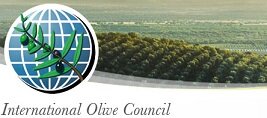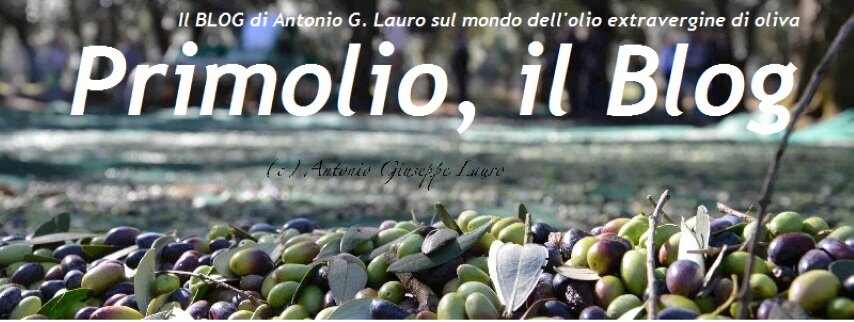Sequoia National Park in the Sierra Nevada, California, is named after, and famous for, its giant trees. Five of the ten largest trees on Earth are here, including the largest, the General Sherman. At Sequoia National Park you can see what the North American landscape was like before the Europeans got there: there are 316 square miles (818 sq km) of original ‘old growth’ forest in the two neighbouring US National Parks, Sequoia and Kings Canyon. These parks have formed the UNESCO Sequoia-Kings Canyon Biosphere Reserve since 1976, and as such are protected. There seems to be some natural bond between trees and Man, and as well as photographing and painting them, hugging them and talking to them, people will sometimes chain themselves to them if they are threatened with being felled. It’s a bit like the affinity people have for whales: something about their size, their majestic indifference to human activities, their longevity and the sense that they were here before us, leads to a respect that we seem to have for few other fellow animals. There’s a feeling that “trees are good for you”, and if that’s so, Sequoia National Park is the place to go to feel connected to them. There’s wildlife to be seen too in Sequoia National Park: American Black Bears, yellow-bellied marmots and red-tail hawks all add their colour to the forest scene, and coyotes, wolverines, opossums and muskrats are among the 72 different mammal species that could be seen as you travel through the park; you are very likely to see several species of deer and squirrels. (Of course bears are potentially dangerous, and there are strict rules which you must obey for your safety.)A note on the pictures
As always on picture-newsletter, the photos of Sequoia National Park are copyright free, if you provide a link to your site and credit us in using the pictures. However these photos are a little unusual these days, in that they were taken using film rather than digital, and scanned in to the site. For this reason, and because some pictures were taken with a wide-angle lens, they may look a little different.When to go
The park is open 24 hours a day, all year round, but tyre chains may be required from the end of summer to late spring, and the parks are closed whenever the weather conditions make it dangerous, so check before you set off. |
|
|
Getting to Sequoia National Park
The nearest airports are Fresno Yosemite International Airport (1 hour 15 mins) and Visalia Municipal Airport (1 hour), and you can rent a car at both. Alternatively you can get a shuttle bus from Fresno Airport (summer only) and from Visalia Airport you can take a bus to the Visalia Transit Center and catch a shuttle from there.
Greyhound buses stop at Visalia Transit Center and in Fresno city, allowing you to connect with the shuttles (summer only).
Most people probably come by car or motor home (‘RV’ in America) and enter by one of the three entrances:
Ash Mountain Entrance is at Three Rivers on Highway 198 from Visalia. The highway enters the park, and this is the way you are most likely to arrive by road.
Big Stump Entrance on Highway 180 from Fresno is for Kings Canyon, but connects with Highway 198 to Sequoia inside the park.
Lookout Point Entrance, two miles before the Ash Mountain Entrance on Highway 198, is only for visitors to the remote Mineral King area of Sequoia National Park; this area is only connected to the rest of Sequoia by trails, not roads. |
Where to stay
If you want to stay inside the park, you have a choice of camping or staying in Lodges. Wuksachi Lodge is in the Giant Forest area, and has 102 rooms, a restaurant, cocktail lounge and shop.
Pear Lake Winter Hut is a rustic hut with ten bunkbeds and a wood pellet stove, which is only suitable for wilderness skiers, as it is six miles across snow to get there.
There are 14 campgrounds across the two national parks: each site for up to six people has a picnic table, fire ring with grill and the all-important metal food storage box to deter bears. You can make reservations for some of the campgrounds, but others are ‘first come first served’ and fill up quickly at weekends and holiday times. If camping in a tent makes you nervous of bears, an RV offers more protection, but there are no electric hook-ups in the park, so you need a generator. There are dump stations at some campgrounds. You are limited to 30 days camping in total throughout the calendar year.
Accommodation outside the park but within 30 miles is available at lodges, inns, farmstays and ranches, Bed and Breakfasts, guest houses and motels. They often have attractive names, such as ‘Wicky Up Ranch’, ‘Historic Seven Sycamores Ranch’, ‘Cinnamon Creek Bed and Breakfast’ or ‘Buckeye Tree Lodge’. There are also some chains, like Comfort Inns or Western Holiday Lodges. You can also find RV parks like ‘Three Rivers Hideaway’ or ‘Sequoia RV Ranch’.What to See and Do
Let’s start with the big trees, since they are the unique feature of this national park that most people come to see.
And let’s begin with a trick question: “What’s the difference between a Giant Sequoia (Sequoiadendron Gigantium), and the Giant Redwood, (Sierran Redwood)? Answer: None, really: they are both species of redwoods, known also as Wellingtonia). There are 65 to 75 acres (26-30 hectares) of Giant Sequoias in the whole of the Sierra Nevada – which doesn’t sound that much when you realise that a soccer pitch takes up about 1.5 acres (0.6 of a hectare) for the playing surface alone. The largest known living tree on Earth, by volume, is the General Sherman – yet it is neither the tallest, nor the widest. Trees are measured by computing the sum of their height, their circumference and diameter at ground level and 1.5 metres up, the diameter of the canopy 18 and 55 metres above ground, and the diameter of the lowest large branch. On this basis the General is the largest tree (and possibly the largest living organism) in the world, being as high as a twenty six storey building. This tree was named after the American Civil War Unionist general, William Sherman, in 1879, when it was already over 2,000 years old. The next largest is the General Grant, named in 1867 after Ulysses Grant, a Union Army general who went on to be US President. Third largest is the President tree, after President Warren G. Harding. The first and third of these trees are in Sequoia National Park, and the General Grant is in Kings Canyon.Most of the rest of what there is to do in Sequoia is outdoors: there are hundreds of miles of trails, ranging from wheelchair easy to tough wilderness hikes, enabling you to experience the wild and hopefully see some wildlife. Guided walks led by rangers are free, and a good way to explore nature safely. There are short talks (20-30 minutes) about individual trees and plants and animals, and if you are staying overnight they put on 1 hour illustrated talks in the Wuksachi Lodge conference room.The only other indoor activity on offer is a Visitor Center such as Foothills Visitor Center, or a museum like the Giant Forest Museum. Opening hours do vary with the season, but both are basically open between 9am and 4.30pm, 365 days a year. Foothills Visitor Center is 1.6km (1 mile) north of the Ash Mountain Entrance on the Generals’ Highway, which links Sequoia and Kings Canyon. Foothills is situated at 457m (1,500 ft) and focuses on the foothills of the Sierra and their flora and fauna. Giant Forest Museum is at 1,980m (6,500ft), and 26km (16 miles) north of the Ash Mountain Entrance. Its historic building is located in a Giant Forest Sequoia Grove, which is what the museum is all about.
Crystal Cave (closed in winter) is a marble cavern that you can visit on a 45 minute guided tour: please note, it’s a steep half mile walk up to the cave entrance, and another half mile walk inside on the tour.
Your Safety
The National Park, like any wilderness has many potential dangers, and it is up to visitors to read and follow the instructions.
Getting Lost – if you are not experienced in hiking and can’t read a map reliably, it is probably better to stick to waymarked trails or guided walks.
Weather – in the Sierra, the weather can change very rapidly, and it is essential to have the right equipment and keep an eye on the meteorological forecasts. Roads can become extremely icy very quickly, and snow chains should be carried and fitted as soon as necessary. Temperatures can reach 38˚C (100˚F) in summer, so you need a hat and sunscreen, and should carry plenty of water. However you shouldn’t drink untreated water in the park in case giardia are present – boil water for at least 3 minutes.
Dangers of the terrain – fast flowing rivers should not be entered, however inviting they look. Do not explore canyons and caverns unless you know what you are doing and someone knows where you are. Breaking a leg in a fall or twisting an ankle can happen: don’t go alone, and make sure someone knows where you are going and when you should be back, and stick to the plan. Once above 2,400m (8,000ft), symptoms of altitude sickness may occur (dizziness, headache, shortness of breath, an unusual level of fatigue). If you experience any of these, you should descend to a lower altitude.
Forest Fire – it is up to every visitor to make sure their fires are confined to the fire pits provided on campgrounds, and properly extinguished before they are left unattended. Also, be aware of, and obey, fire restrictions in force from time to time. No smoking is ever allowed outdoors below 1,800 metres (6,000ft).
Animals – probably most dangerous are bears and rattlesnakes. Make plenty of noise while walking and bears will avoid you; what you don’t want to do is suddenly corner a bear which wasn’t expecting to see a human. There are strict rules about not leaving food where it can be attractive to bears, and even the smell of a barbecue on your clothes can bring unwanted attention! If you are lucky enough to see a snake, keep a safe distance away: keep your eyes open as you walk so you don’t tread on one, and again make plenty of noise; you may see less wildlife, but you will stay safer.
Tourist Information
The National Park and their partner organisation, Sequoia Parks Conservancy, publish a Visitor Guide and park newspaper. It is available on the internet so that you can read it before you arrive.
|
|





































































